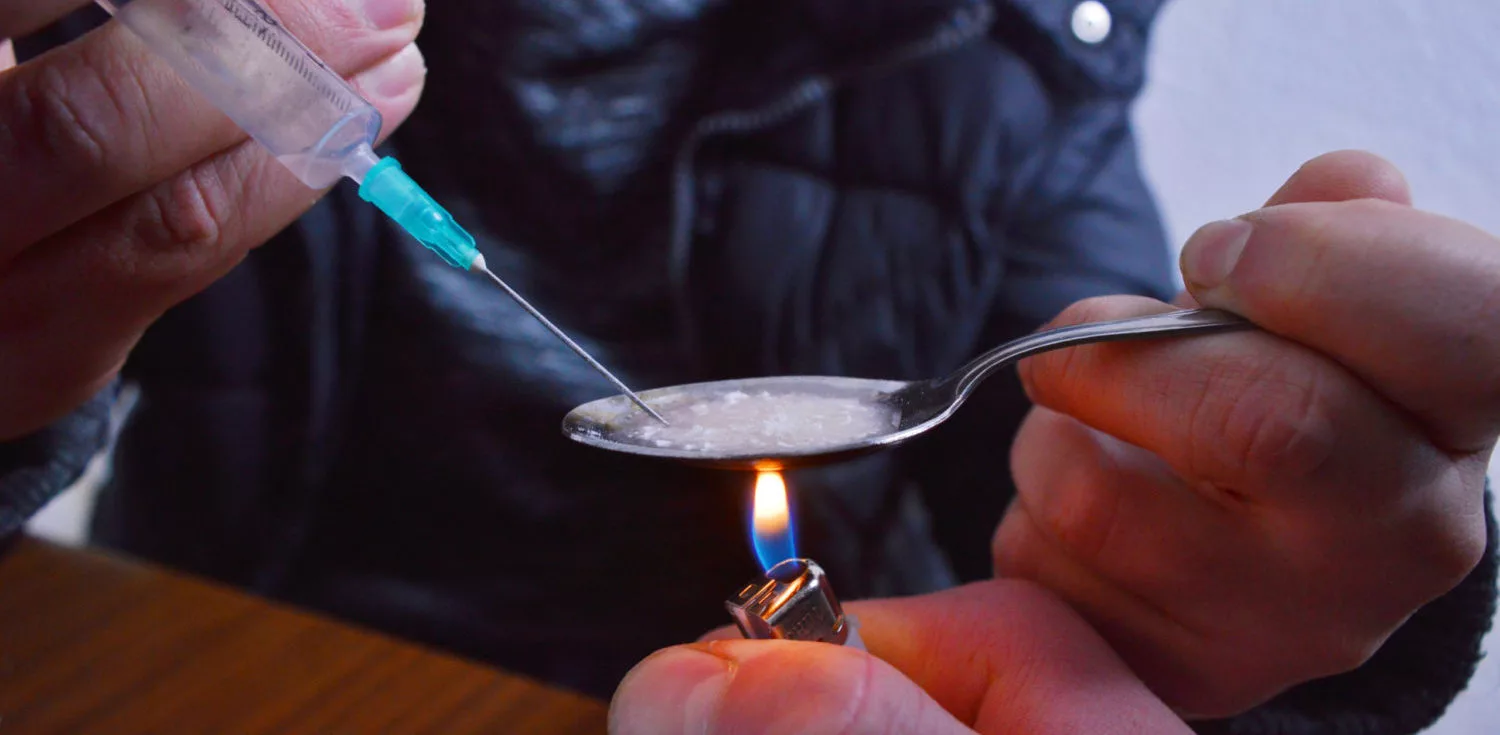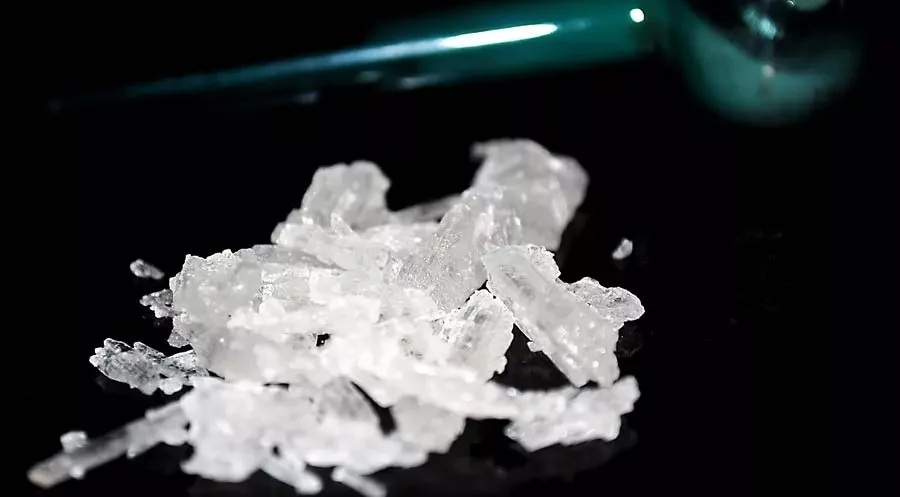What is Methamphetamine?
Table of Contents
- What is Methamphetamine?
- How is Meth Used?
- How Does Meth Affect the Body?
- What is Methamphetamine Withdrawal?
- Common Meth Withdrawal Symptoms
- How Long Does Meth Withdrawal Last?
- The Possibility of Post-Acute Methamphetamine Withdrawal Syndrome
- Best Ways of Managing Methamphetamine Withdrawal Symptoms
- Other Ways to Relieve Meth Addiction Withdrawal Symptoms
- How to Support Someone in Withdrawal
- The Dangers of Stopping Meth Use On Your Own
- Get Professional Guidance from Find Addiction Rehabs!
Methamphetamine (meth), also referred to as crystal meth, is a highly potent and addictive stimulant drug that is currently classified as a Schedule II controlled substance by the Drug Enforcement Administration (DEA).
This means that meth both has a medical purpose, as well as a high risk for drug addiction. Meth can occasionally be used to treat narcolepsy and Attention Deficit Hyperactivity Disorder (ADHD). However, because of its high prevalence of drug abuse, this is uncommon. Far more common are those suffering meth addiction withdrawal from using illegal methamphetamines.
Keep reading to find out more about meth withdrawal and how best to begin a path to lasting recovery!
How is Meth Used?
There are several ways in which meth users may abuse this substance, including swallowing, snorting, injecting, or smoking it. These can produce different side effects, potentially causing a person to regularly increase or otherwise adjust their usual dose and method of administration.
How Does Meth Affect the Body?
Meth primarily affects the central nervous system, releasing dopamine into the parts of the brain that control a person’s motivation and reward systems. This can cause them to experience a major energy boost, or even make them more socially adept.
However, this brief euphoric high is only temporary, and the crash that follows it can be particularly unpleasant. During a meth crash, users often find themselves experiencing increased depression or irritability.
Unfortunately, these unwanted feelings may cause them to continue their drug abuse, so as not to have to experience them anymore. Over time, long-term repeated meth use can cause a person to be unable to experience pleasure without the repeated use of this substance.
This, coupled with strong meth cravings, are a major reason why most users end up developing an addiction to meth. And, unfortunately, this can make it extremely difficult to stop using meth without professional addiction treatment services.
What is Methamphetamine Withdrawal?
Because it is such a powerful drug, once a person becomes addicted to it, attempting to quit or significantly reduce their crystal meth use will cause them to develop many unpleasant withdrawal symptoms.
The meth withdrawal period can cause various physical and emotional symptoms as a result of the person’s physiological dependence on this substance. This is why many individuals overcoming a stimulant use disorder are highly encouraged to undergo medical detox,
This will allow them to recover with the constant support and supervision of medical professionals, keeping them on track with and committed to their recovery journey. This can also help prevent them from succumbing to the side effects of withdrawal and using again.
The methamphetamine withdrawal process can be intense, potentially lasting over the course of several days, weeks, or even longer. This will depend on various individual factors, including how long the person has been addicted to meth, and their own personal/medical history.
Common Meth Withdrawal Symptoms
Methamphetamine is a highly toxic substance, meaning meth detox can be harsh on both the body and mind. While everyone’s experience with addiction and withdrawal will vary, there are many common physical and psychological symptoms that may occur when stopping meth use.
Physical Symptoms
When reducing or stopping one’s usage of methamphetamine, there are many physical withdrawal symptoms that may occur as a result of this, the most prevalent of which include:
- Drug Cravings. Many recovering methamphetamine users will experience strong urges to use this drug when stopping their use of it, a feeling referred to as drug cravings.
- Sleepiness and Fatigue. When recovering, individuals will likely feel tired and sleepy, largely remaining sedentary. This is especially likely during the first week of withdrawal, peaking around the fifth day. They may sleep for up to 11 hours daily, and may also experience vivid dreams during this period.
- Increased Appetite. People who are on meth usually lack an appetite, but during withdrawal, their desire to eat will likely significantly increase. In particular, they may have a strong urge to eat sweets and starchy foods throughout their withdrawal process.
In addition to those listed above, physical meth addiction withdrawal symptoms commonly include headaches, body pain, stomach problems, tremors, hyperventilation, and irregular heartbeat.
Psychological Symptoms
- Anxiety. Those going through meth withdrawal are likely to experience anxiety, even occasionally developing full-on anxiety disorders while actively addicted to this substance or during their recovery process.
- Depression. As the chemical balance of their brain is dysregulated and they no longer have meth to provide dopamine, individuals going through meth withdrawal will commonly experience low or depressed moods. While this will usually subside by the third week, for some people, it can continue for longer.
- Psychosis. Hallucinations and delusions are also commonly experienced during meth withdrawal. These can be visual, auditory, or even tactile, and can be extremely distressing if unable to receive professional support during recovery.
- Memory Problems. Many individuals who are recovering from meth abuse have trouble concentrating, as well as retaining the past and forming new memories.
How Long Does Meth Withdrawal Last?

The length of time it will take someone to fully withdraw from their meth use will vary based on the severity of their addiction, as well as how, how much, and how often they took this drug.
Generally, however, acute physical meth withdrawal symptoms will usually peak around the second or third day after stopping use, and will begin to subside after about a week. However, the psychological symptoms can last far longer, with their cravings, sleep issues, and mood swings extending over several weeks.
In some people, their depressive episodes and moods can last for up to 12 months, a condition that is referred to as post-acute withdrawal. This will generally require further and more extensive treatment to be properly managed.
When considering this period, while not everyone will follow exactly the same meth withdrawal timeline, this will likely follow a general process:
- Day 1 to 2: The first 24-48 hours after stopping meth use, or the acute phase of withdrawal, will serve as the comedown or crash period. This will likely entail withdrawal symptoms such as abdominal cramps, nausea, and sweating, along with a significant drop in cognitive function and energy.
- Day 3 to 10: At this point, symptom severity will likely peak, particularly with psychiatric symptoms of meth withdrawal. These include anxiety, depression, and severe fatigue, as well as possible suicidal thoughts. Some people will also experience body aches, tremors, and continuous intense drug cravings.
- Day 14 to 20: Most meth withdrawal symptoms will continue over two to three weeks. By the end of week two, while the physical symptoms will generally start to subside, the cravings, fatigue, and depression may continue.
- Day 30 and onward: After the first month, the worst should be over, with any lingering symptoms gradually resolving over time. However, depression and anxiety can continue for some people over the next several months.
The Possibility of Post-Acute Methamphetamine Withdrawal Syndrome
While the above timeline is a fairly reliable general idea of how long this period will extend and what it will entail, it is not a universal estimate. Some individuals struggling with a stimulant addiction may develop a condition referred to as post-acute withdrawal syndrome (PAWS).

When someone develops PAWS, their symptoms of meth withdrawal can last from six months to two years even after they have stopped their meth use. Furthermore, former users can struggle with impulse control for a long time, and may also have to deal with symptoms such as:
- Lack of energy
- Sadness, moderate to severe depression, and anxiety
- Insomnia or fatigue
- Issues with memory, problem-solving, and learning
- Irritability or hostility
- Mood swings
- Brain fog
- Chronic pain
- Inability to focus
- Decreased libido
The severity of these symptoms can fluctuate and worsen based on the individual’s stress levels. In some cases, a person’s PAWS symptoms can temporarily resolve, before spontaneously returning in the future.
This can be incredibly frustrating for many people after having made it through the challenges of withdrawal and detox, and working so hard to maintain their abstinence. Of course, PAWS can be controlled with the right support, including the use of therapy and adjunctive medications.
Acamprosate, for example, has been found to be effective in providing further treatment to those who are experiencing and struggling with PAWS symptoms. Acamprosate is often used in conjunction with various behavioral therapies.
According to the Substance Abuse and Mental Health Services Administration (SAMSHA), these interventions are a key part of effective substance abuse treatment, as they help individuals to live a more normal and balanced life during and after their recovery process.
Best Ways of Managing Methamphetamine Withdrawal Symptoms
While the symptoms of meth withdrawal can seem intimidating and difficult to overcome, these can be safely managed and even prevented when seeking treatment at a medically-supervised detox facility.
These treatment centers can provide constant medical supervision and support while detoxing off of meth or any other substances, and can last over the course of a few days, or even multiple weeks, depending on the severity of a person’s addiction.
Some people will find it extremely difficult, and even impossible, to cope with their withdrawal symptoms by themselves. With medical detox, these individuals can receive various recovery services, including clinical support and medication-assisted treatment.
Medications Used for Relief of Withdrawal Symptoms from Meth
While there are no medications that have been created specifically for managing meth withdrawal, there are some drugs that can help to significantly reduce the severity of the side effects commonly experienced during this period, as well as manage meth cravings.
This includes the anti-anxiety drug Fluoxetine, or Prozac, which is commonly prescribed to withdrawal patients who are experiencing panic attacks and other anxiety complications. Furthermore, the antidepressant Bupropion may also be administered.
This medication has been found to help reduce drug cravings, making it far easier for recovering individuals to resist the temptation of drug use, as well as reduce and even prevent their risk of addiction relapse during withdrawal.
Other Ways to Relieve Meth Addiction Withdrawal Symptoms
For those who are in the process of going through crystal meth withdrawal, or who are further along in their recovery from drug alcohol abuse, there are various things they can do to help make this process a bit easier. Individuals may be better able to make it through treatment by:
- Eating Healthy Foods. As previously mentioned, during meth withdrawal, a former user’s appetite will often return. This can make them prone to overeating, or consuming unhealthy foods, which can be hard on the body. Thus, maintaining a balanced diet and consuming healthy foods in moderation can further help the body restore itself and flush out toxins more quickly and efficiently.
- Exercising. There are various health benefits to getting plenty of exercise during crystal meth withdrawal. While a person’s workout routine will likely have to start small and easy, getting the body moving can help improve blood flow, relieve anxiety and depression, and flush out toxins more quickly.
- Avoiding Triggers. Throughout the entirety of the meth withdrawal timeline, drug cravings and external triggers for meth use will be recurring issues. Knowing how to avoid and respond to these should they occur will be essential to a person’s ability to achieve and maintain sobriety.
- Finding Ways to Keep Busy. Boredom can be a major issue when recovering from addiction, making it important to find healthy and productive ways of keeping the mind and body busy during withdrawal. This may include forming new hobbies, or maintaining a full recovery schedule while receiving treatment.
How to Support Someone in Withdrawal
If you have a family member, friend, or other loved one who is experiencing crystal meth withdrawal, it is quite common to experience feelings of helplessness as you witness them endure the various uncomfortable side effects this period may present.
Fortunately, there are ways for you to support your loved one during this withdrawal process, and to help them feel less alone during the process. This will include doing things such as:
- Making sure the person in withdrawal is drinking lots of water and other fluids.
- Encouraging them to sleep regularly and extensively, so that their mind and body can properly recover.
- Providing them with healthy and consistent meals.
- Reminding them that it will take time to heal and properly overcome their substance abuse.
- Providing them with regular emotional support and reassurance.
- Encouraging them to seek out professional addiction treatment and recovery services.
The Dangers of Stopping Meth Use On Your Own

As we have discussed, overcoming an addiction to meth can be extremely difficult. This is not necessarily because users lack the willpower or moral compass to do so. Rather, this process is so hard because the person’s drug use has caused their brain to undergo significant changes. Unfortunately, many people do not realize the extent to which their brains and body have come to rely upon these addictive substances. Many people will try to get sober due to a genuine desire to become healthier and take back control over their lives.
However, in many of these cases, they are not prepared for the combination of uncomfortable physical and emotional side effects that can make the recovery process feel impossible for them. While quitting alone is not impossible, it is certainly not easy, and can be dangerous.
When recovering in professional treatment facilities, they will be surrounded by doctors, nurses, and addiction professionals that can keep them comfortable and safe. Furthermore, they will not have access to outside triggers or stress, allowing them to fully focus on their health.
Meth addiction can wreak havoc in every aspect of your and your loved ones’ lives. Seeking professional treatment providers and care when undergoing meth detox and withdrawal will give you your best chance at safely achieving and maintaining your sobriety.
Get Professional Guidance from Find Addiction Rehabs!
As you can see, meth addiction withdrawal can be difficult. However, medically supervised detox is the most effective way to begin treatment. It sets the stage for subsequent phases of the recovery process, by getting you safely through the most difficult part.
If you or a loved one wants to overcome a meth addiction, you need to seek professional help at a meth rehab facility. With so many facilities and programs out there, you may not know which to choose. Reach out to Find Addiction Rehabs today for help in choosing the best program for your needs. Our team of experts will help you get on the path to sobriety.
Charles F. has been an active part of the Florida recovery community for over 5 years. He began as a behavioral health technician at an addiction treatment facility in Ocala, Florida and has since begun training as a Licensed Addiction and Chemical Dependency counselor in Boca Raton. Charles’ passion involves the promotion of recovery and helping spread the hope of recovery to as many readers as possible!



